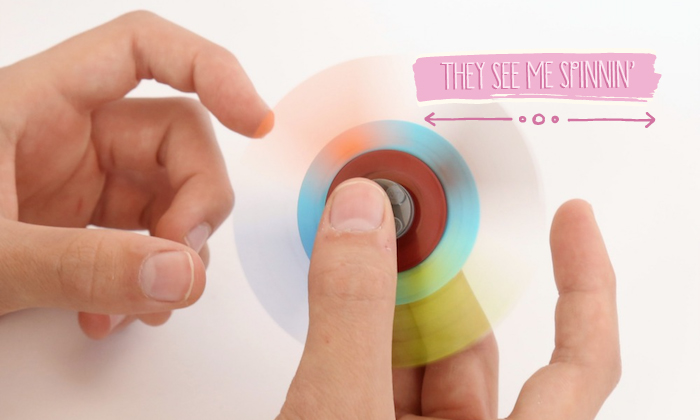

You spin me right round…
From loom bands to Tamagotchi’s there is always a craze sweeping schools and playgrounds across the globe and 2017 is no different. This year is the year of the Fidget spinner. And as with all crazes, this one is getting slightly out of control; shops are selling out, parents are scouring the shops in despair and schools have resorted to banning them from classrooms. This isn’t unusual when a craze takes hold; what is unusual however is that Fidget spinners weren’t designed by a leading toy company and they have in fact been around for years. So what exactly are they, why are they so popular and are they good news or bad news for our children?
The concept is quite clear – this is a device with which you fidget. And fidgeting is something we all do; children in particular. With the fidget spinner you hold it between your forefingers and thumb and set it spinning with the other hand. Simple concepts are usually the most popular and this is no different as it really is that easy. At least it is to start with. Videos are now popping up on YouTube demonstrating various tricks that kids can go on to master and its here where the problem lies.
As a teacher, I can think of umpteen children I have had in classes who’ve tapped their fingers, rocked on their chairs or even clicked their tongue repeatedly. Having worked for many years with children on the autism spectrum and children with ADHD, I’ve used fidget toys to help students maintain concentration. Some children generally can’t sit still and so a fidget toy can put their restless fingers to work and allow their mind to focus more readily on the task at hand.
So are these fidget spinners a help or a hindrance in the classroom and is it wise to allow your child to take theirs into school? The main issue is that there is a fundamental difference between some of the traditional fidget toys and these fidget spinners. Fidget spinners require hand/eye co-ordination and they can be used in numerous ways. As children explore new tricks, they no longer become about fidgeting – they require concentration and actual engagement. Suddenly the child is only focused on this.
We live in an increasingly digital age. Children are over stimulated; living in a world where everything moves, everything makes noise and everything lights up. Concentration spans are becoming noticeably shorter and a toy that focuses the mind and allows children to develop new skills is welcomed in my eyes. As with everything; the real issue becomes about how and when a toy is used and in the right arena these little devices are fantastic.
Would I want them in my classroom? Probably not. And if your child truly needs an aid to support them to sit still, then it’s definitely best to discuss this with their teacher rather than just reach for a fidget spinner. But whilst the craze is in full swing, it’s good to know that Hong Kong is well stocked. I saw an array of different ones walking through the streets of Wan Chai today and from as little as $20 this is a craze that won’t break the bank.
![]()
![]()
 View All
View All











 View All
View All





 View All
View All


 View All
View All









